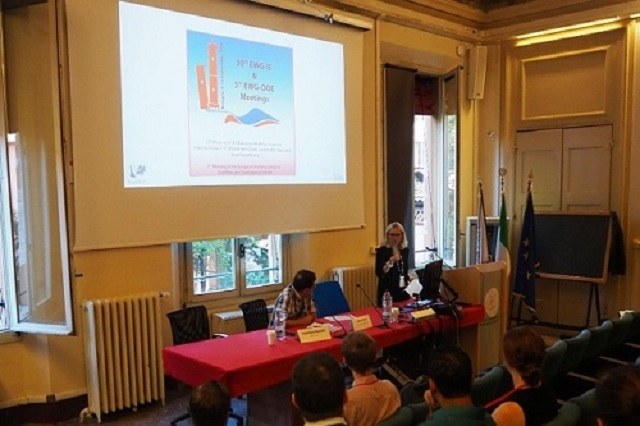Over 80 participants – including researchers and professionals from Europe, USA, Canada, Australia and Japan – gathered at the 30th Meeting of the European Working Group on Internal Erosion (EWG-IE) & 5th Meeting of the European Working Group on Overflow and Overtopping Erosion (EWG-OOE) - this year hosted by the University of Bologna between 9 and 13 September. The annual conference held by the two international working groups gathers the world’s leading experts in the field of erosion mechanisms affecting embankment structures and dams, altering their functionality, and potentially stability.
The forum was organised by Laura Tonni, Michela Marchi and Guido Gottardi, professors of Geotechnics at the Department of Civil, Chemical, Environmental, and Materials Engineering (DICAM). These scholars have been focusing their research activities on embankment stability, especially on a retrogressive erosion mechanism at the origin of the numerous sand boils observed at the bottom of the Po River banks during cresting events.
The event provided an opportunity to share the latest research findings, present case studies, best risk evaluation approaches and the most innovative measures to mitigate erosion phenomena.
‘We discussed ongoing research findings and the experiences gained in managing flood risk associated with various erosion processes, as well as new ideas for developing technologies for protecting embankment structures. The debate provided useful insights for the managing bodies of river basins and dams to refine operational guidelines’, states Professor Tonni. ‘The nearly sixty presentations and numerous discussion sessions allowed for outlining the role of various types of erosive mechanisms on embankment stability, as well as providing a comprehensive overview of the current state of knowledge in a field of undeniable interest for our region, with the aim of protecting it from flood risk’.
During the meeting – which was sponsored by the Emilia-Romagna Region and the Po River District Basin Authority, among others – plenty of time was dedicated to the flooding event which hit the Romagna area in May 2023. A series of presentations and a technical visit along the banks of the Idice River allowed to illustrate to the international community the peculiarities of the event, the damage caused and the following interventions to restore the embankment structures.
In addition, the meeting provided an occasion to present the experimental activities on small and medium-scale physical models recently developed at the DICAM laboratories as part of the European project LIFE SandBoil (Natural-based solution to mitigate flood risk due to SAND BOILS reactivations along the Po River, LIFE19 ENV/IT/000071). The project was coordinated by the University of Bologna, with Laura Tonni as Scientific Representative and the participation of Professors Michela Marchi and Guido Gottardi. It also includes the participation of the Interregional Agency for the Po River (AIPo), Officine Maccaferri Italia and the North-Transdanubian Water Directorate (ÉDUVIZIG), a Hungarian institution responsible for the safety of a portion of the embankment structures of the Danube River basin. The aim is to develop an innovative, low environmental impact technology for the mitigation of erosive processes underneath embankment structures. The technology should be applicable to all sections of the Po River affected by the presence of sand boils.
During a technical visit, Ilaria Bertolini, Elena Dodaro, Emanuele Tumedei and Mario Marcolongo – young researchers from the geotechnics group at the DICAM – illustrated the different phases in the prototyping of this mitigation technology.

